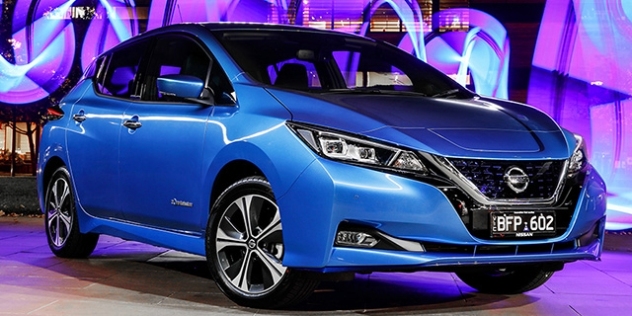
There are a number of plug types used to charge electric vehicles, depending on a few factors.
Because plug technology has evolved over time without a global standard, different countries – and companies in the case of Tesla – have ended up developing their own.
The industry is gradually standardising, but there are still a few types in use. It is also possible to buy plug adapter cables to enable the use of different chargers.
AC charging is slower but cheaper to install (and can even be done via a general power outlet (GPO), otherwise known as a powerpoint.
DC chargers are connected directly to the grid, and can charge a lot faster than AC chargers. However, they are more expensive to install.
The main plug types you will come across in Australia today are CCS2 and CHAdeMO (both for DC charging) and Type 2 (for AC charging).
Australia follows the European plug standards as opposed to North America. All new EVs in Australia - with the exception of Japanese brands - use a CCS2 plug for DC charging. This port also takes a Type 2 plug for AC charging.
Nissan and Mitsubishi use CHAdeMO, and have a separate port for Type 2 AC charging.

Above: Nissan Leaf electric car
Some older models will have a Type 1 port instead, and some older Tesla EVs will have a proprietary Tesla port.
The proprietary Tesla port was originally developed by the company for use in the US. Because EVs and EV chargers were not common, the company needed to build a charging network in parallel to making EVs. It therefore developed its own plug type.
In late 2022, the company renamed its plug type the North American Charging Standard (NACS), and made its protocols open source, arguing its plug type is lighter and more powerful than the CCS connectors used by other companies.
| Mode | Type | Design | Typical charge rate | Used in | Notes |
|---|---|---|---|---|---|
| Mode 3 (AC) | Type 1 (J1772) |  |
1kW | Australia, North America, Europe, Japan | Only on older EVs in Australia |
| Mode 3 (AC) | Type 2 (Mennekes) |  |
2.2-22kW | Australia, Europe | On all new EVs |
| Mode 4 (DC) | CHaDeMO |  |
Up to 350kW | Australia, North America, Europe, Japan | Nissan, Mitsubishi, Toyota |
| Mode 4 (DC) | CCS |  |
Up to 350kW | North America | Only on some older EVs in Australia |
| Mode 4 (DC) | CCS2 |  |
Up to 350kW | Australia, Europe | All other brands |
| Mode 3 (AC), Mode 4 (DC) | Tesla |  |
Up to 22kW (AC). Up to 250kW (DC) | Australia, North America, Europe, Japan | Also known as North American Charging Standard (NACS) |
| Mode 3 (AC), Mode 4 (DC) | GB/T |  |
Up to 27.7kW (AC). Up to 250kW (DC) | China | Only used in China |
Currently, only the CHAdeMO plug type is bidirectional. This means that when plugging in the EV, energy can be stored in the high voltage battery in the car, or the energy in the battery can be used to power something else.
This Japanese-based plug standard was designed from the start to allow this capability, and it has been used in emergency situations such as after the Fukushima nuclear disaster to provide power to help with recovery operations.
There are different types of bidirectional capabilities such as vehicle-to-grid (V2G), vehicle-to-home (V2H) and vehicle-to-load (V2L).
V2G and V2H have the potential to support renewable energy sources such as solar and wind power. These sources of energy can be variable in their output, which means that there may be times when excess energy is generated but not needed. By using an EV to store energy in the EV battery and then later release it, renewable sources of energy can be utilised more efficiently and effectively.
V2G/V2H capabilities require a specialised charger. Currently, only one bidirectional has been certified for use in Australia (and only approved fro installation in South Australia) - the Wallbox Quasar 2. However, Wallbox has discontinued this unit and it is no longer available for purchase.
The protocols and standards that govern bidirectional charging are also expected to change in the near future. After that, cars that use CCS2 plugs will also be able to be used for bidirectional charging.
Vehicle-to-load (V2L) is another type of bidirectional charging, but can only be used to power devices via a special plug adapter, or an internal V2L power outlet.
Because of the parallel development of EV plug adapters in different locations, EV equipment suppliers sell EV plug adapters.
EV plug adapters provide compatibility, convenience, and can future-proof older EVs without needing a costly port upgrade.
Ultimately, EV plug adapters can offer more flexibility and convenience for electric vehicle owners, helping to make EV charging more accessible and convenient.